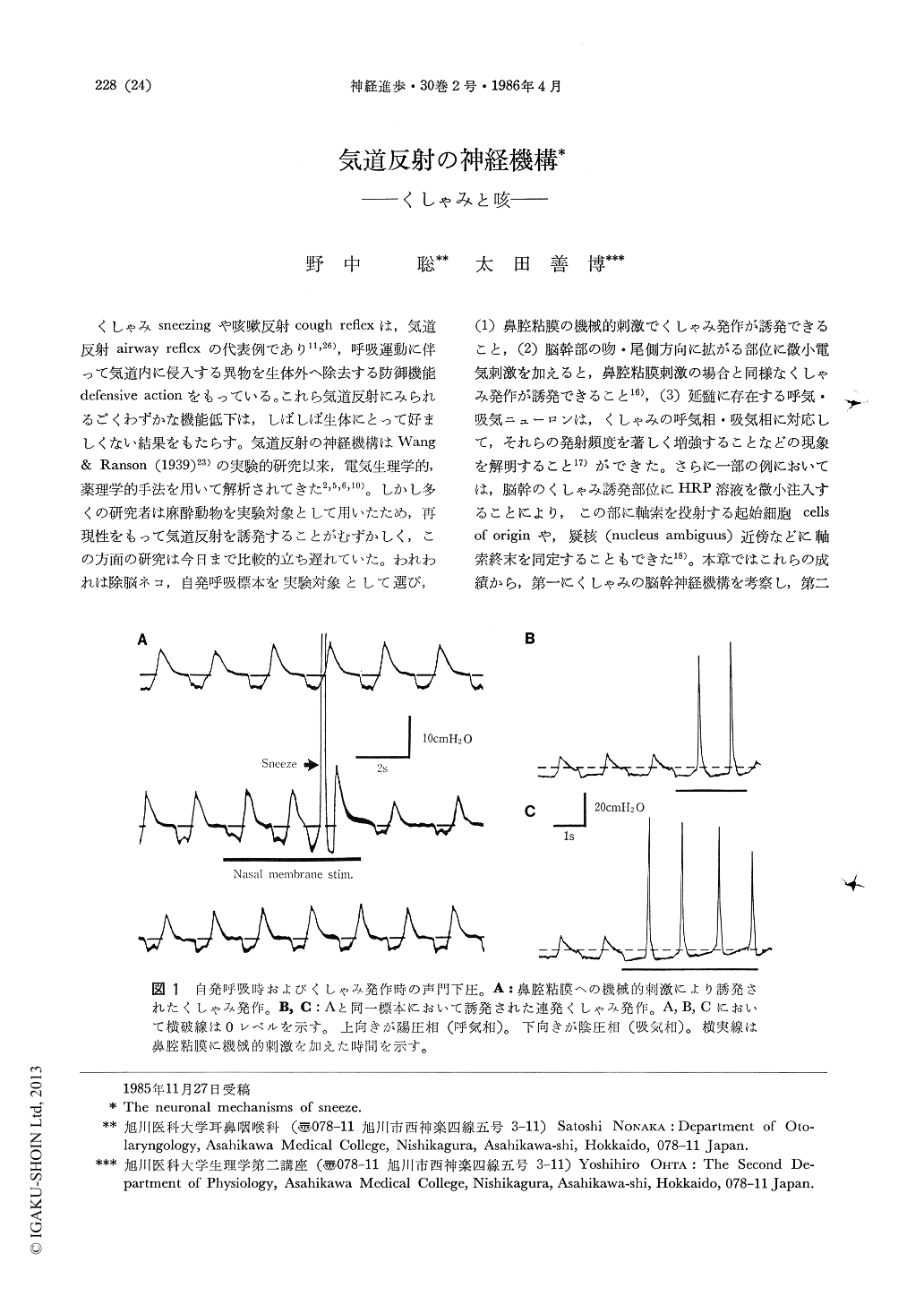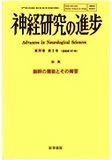Japanese
English
- 有料閲覧
- Abstract 文献概要
- 1ページ目 Look Inside
くしゃみsneezingや咳嗽反射cough reflexは,気道反射airway reflexの代表例であり11,26),呼吸運動に伴って気道内に侵入する異物を生体外へ除去する防御機能defensive actionをもっている。これら気道反射にみられるごくわずかな機能低下は,しばしば生体にとって好ましくない結果をもたらす。気道反射の神経機構はWang & Ranson(1939)23)の実験的研究以来,電気生理学的,薬理学的手法を用いて解析されてきた2,5,6,10)。しかし多くの研究者は麻酔動物を実験対象として用いたため,再現性をもって気道反射を誘発することがむずかしく,この方面の研究は今日まで比較的立ち遅れていた。われわれは除脳ネコ,自発呼吸標本を実験対象として選び,(1)鼻腔粘膜の機械的刺激でくしゃみ発作が誘発できること,(2)脳幹部の吻・尾側方向に拡がる部位に微小電気刺激を加えると,鼻腔粘膜刺激の場合と同様なくしゃみ発作が誘発できること16),(3)延髄に存在する呼気・吸気ニューロンは,くしゃみの呼気相・吸気相に対応して,それらの発射頻度を著しく増強することなどの現象を解明すること17)ができた。さらに一部の例においては,脳幹のくしゃみ誘発部位にHRP溶液を微小注入することにより,この部に軸索を投射する起始細胞cells of originや,疑核(nucleus ambiguus)近傍などに軸索終末を同定することもできた18)。本章ではこれらの成績から,第一にくしゃみの脳幹神経機構を考察し,第二にこれらの機構を咳嗽反射の脳幹神経機構と比較する。
The airway reflexes prevent the penetration of exogenous substrates into the lower respiratory tract. Together with cough, sneeze is one of the most essential airway reflexes. The sneeze is characterized by an abrupt increase in the subglottic pressure followed by a forceful active expiration. In this study, we tried to analyse the neuronal mechanisms of sneeze in a precollicular-postmammillary decerebrate cat. Such preparations maintained spontaneous and rhythmical respiration with a rate of about 30/min.
Mechanical stimulation (duration; 5 s, frequency; 20Hz, amplitude; 500pm) to the nasal membrane by means of a spring coil vibrator interrupted rhythmical respiration and evoked sneeze (peak pressure; 80-100 cmH2O). In the same preparation, electrical stimulation (0.2ms, 10Hz, 10-40μA) of a certain area within a lower brainstem evoked sneeze. The sequences of EMG activation and the accompanying change in the subglottic pressure were almost the same across brainstem-induced sneezes and nasal-induced ones. The sneeze evoking region was located ventromedial to the spinal trigeminal nucleus extending rostrocaudally from P 4.0 to 12.0 according to Horsley-Clarke coordinates. Microlesion made at a caudal portion of this region diminished the rostral stimulus effects. No significant change in the caudal stimulus effect was observed with rostral microlesion of this region. Rhythmically firing inspiratory neurons located ventral to the nucleus ambiguusincreased its firing rate significantly corresponding to the preparatory inspiratory phase of sneeze. Expiratory neurons increased its firing rate dramatically corresponding to the explosive expiratory phase of sneeze.

Copyright © 1986, Igaku-Shoin Ltd. All rights reserved.


